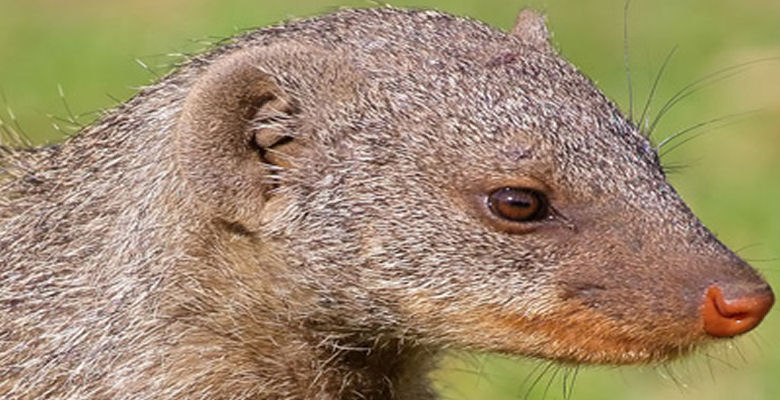Strategies for survival

In order to understand more about animal behaviour a team of researchers, including Dr Hazel Nichols from the LJMU Natural Sciences and Psychology, have been investigating the breeding patterns of the banded mongoose. Their work has shed light on the unusual behaviour of this mammal, which sees one in four mongoose 'couples' being related.
It is well-known that breeding between relatives results in reduced biological fitness in a given population (inbreeding depression), and that inbred individuals suffer health problems as a result. Consequently, the vast majority of animal species avoid mating with relatives in the wild. Published in Biology Letters, the research which involved LJMU, the University of Exeter and Bielefeld University, looked at how the mongoose are turning this around in order to survive in their social groups.
The unusually high rate of close inbreeding in the banded mongoose could be a consequence of group structure, as the scientists found that inbreeding was more common in older social groups, which tend to contain a lot of relatives.
"How animals balance the costs of inbreeding is important to understand, as this can be a fundamental determinant of their survival strategies and how they breed successfully," Dr Nichols says.
"In the majority of vertebrates, the balance seems tipped towards inbreeding avoidance, at least at the within-group level. Identifying species where inbreeding is a normal part of the mating system will allow us to investigate how this balance can be reversed and to understand how inbreeding might affect cooperation and conflict within social groups. For example, it is possible that inbred animals are poor quality so are less able to help their relatives than outbred animals, or on the other hand, inbred animals may be surrounded by close relatives so may be more likely to help out; future studies will help us to fully understand why banded mongooses often choose to breed with relatives."
"Research of this nature has possible impacts on our understanding of conservation. If we investigate how populations survive frequent close inbreeding (as we see in the banded mongoose), we may be able to help species that end up inbreeding due to human-induced population declines and habitat fragmentation."
The paper Evidence for frequent incest in a cooperatively breeding mammal is available here
The research was also covered by Science


